Blog home / A Weather Guide to Spring, Summer, and Fall Adventures in Canada
By Robin Esrock
While there’s never a bad time to hit the trails or hop on a bike seat, each season brings a different personality, and Canada’s landscape can change dramatically. From the mountains of British Columbia to the boreal forests of Ontario and the windswept cliffs of Newfoundland, here’s a weather guide of what you can expect on your next great outdoor adventure:
Spring Awakens
After the long dark days of winter, Canada’s wilderness finally awakens. Temperatures increase, days get longer, animals emerge from hibernation, and buds begin to blossom. On the southern coast of British Columbia, temperatures typically reach a pleasant 15°C (59°F) by May, ideal for biking and hiking. Cherry blossoms explode around Vancouver, and trails into the mountains light up with wildflowers. Fewer crowds, but evenings can still get cold, and days can get wet. If you’re layered up with the right gear, expect to take it all in your stride.
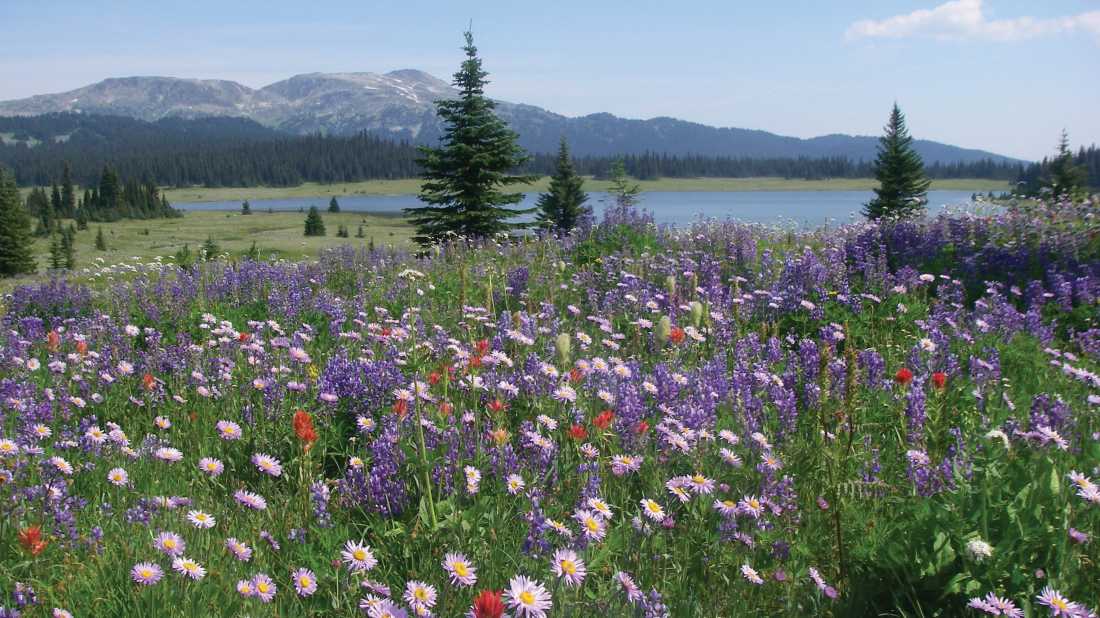
It takes a little more time for spring to hit Alberta’s Canadian Rockies. The great awakening only reaches Banff and Jasper in late May or early June, when average temperatures finally climb above 10°C (50°F). When it does, snowmelt results in spectacular waterfalls, alpine blooming wildflowers, and a dramatic contrast between the snow-capped mountains and lush evergreen forests. High-elevation trails remain snow-covered well into June, limiting some access, but the upside is fewer crowds, surprisingly long sunny days, and the feeling that you have the world to yourself.
Ontario's spring arrives more predictably in late April, with average temperatures climbing to a pleasant 20°C (68°F) in Ottawa and the Niagara Escarpment, while remaining cool in the range of 5–9°C (41–48°F) along the Bruce Peninsula. That improves to 14°C (57°F) on the Bruce Peninsula in June, around 24°C (75°F) in the Niagara region and 24°C (75°F) in Ottawa if you plan to tackle the Rideau Heritage Trail. The forest pops with wildflowers – especially Ontario’s provincial flower, the white trillium – and bird life starts buzzing in the woods and around the melting lakes. Also buzzing: early-season insects, but this can vary greatly depending on conditions and locations.

Quebec's spring is possibly the most romantic in the country, especially in the countryside around Quebec City and the Laurentians. Mild average daytime May temperatures in the Laurentians sit about 18–20°C (64–68°F), making it perfect cycling or hiking weather. Bright green sugar maple leaves create a vibrant backdrop, and fresh maple syrup harvested in March and April add a sweet culinary touch to any journey. Temperatures into June keep increasing, and if you’re exploring the Eastern Townships, expect a bounty of farm-fresh products along the way.
Towards the end of May, the snow has melted in Prince Edward Island. Purple lupin and wild roses bloom, massive lawns get mowed, and seasonal stores ready for business. Temperatures hover around 15–18°C (60–65°F), increasing to an average high of 17°C (62°F) and lows around 11°C (51°F) in June. While the coast can still be a little unpredictable if you’re cycling tip to tip, the crowds are sparse, the weather mild, and the landscape feels particularly fresh.
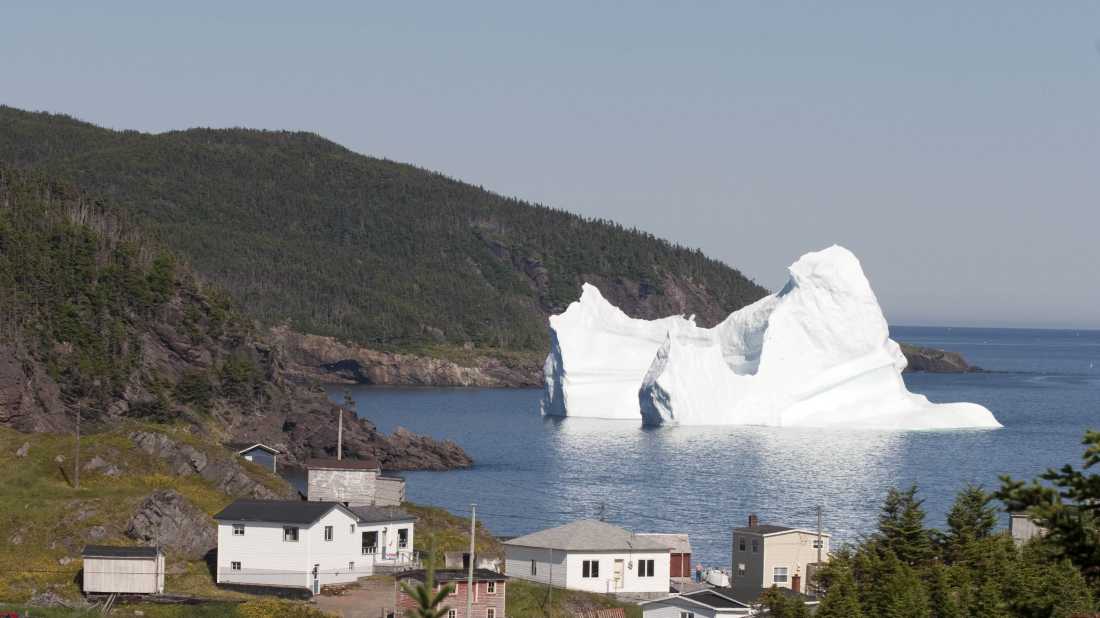
Hiking the East Coast Trail kicks off in the middle of May. This coincides with peak iceberg viewing season, late May and early June, as the icy giants migrate down the coast of Newfoundland. While temperatures remain cool, ranging from highs of about 8–15°C (46–59°F) in May and the high teens in June (66–68°F), hikers are often rewarded with the magical appearance of migrating whales and seabirds.
Up north, the Yukon's spring is brief but glorious. When it finally arrives in late May, average temperatures climb steadily to an average of 16.5°C (62°F) in Whitehorse, and a little warmer in Dawson City. Heating up in June, it can feel like the entire territory explodes with sunshine and wildflowers, as the days get longer, approaching the peak equinox. We only hit the trail at the end of July, in the throes of the midnight sun season, when outdoor adventure comes into its own.
Read more in Robin’s post about Spring in Canada
The Playground of Summer
Imagine 20 hours of sunlight to chase your outdoor adventure bliss. With so much territory to explore and daylight to do it in, locals and visitors flock to Canada for our bounty of hiking and biking trails. Unless there is an unseasonal heatwave, it seldom gets uncomfortable, and mild summer evenings are perfect for putting your feet up.
Temperatures hover around 25°C (77°F) in the Kootenays if you plan on hiking the B.C mountains, although remember it is always cooler at altitude. If you’re peddling the Kettle Valley Heritage Trail, expect things to be toastier in the BC interior, where summer temperatures average a toasty 28°C (82°F). Now those lake swims become especially inviting! It’s significantly cooler along the wild west coast of Vancouver Island, where hikers from around the world plant their poles on the legendary West Coast Trail. Daytime temperatures average around 14–19°C (57–66°F), dropping at night. Rains can fall throughout the summer across British Columbia, although these days it’s seen as a welcome respite as opposed to an inconvenience.
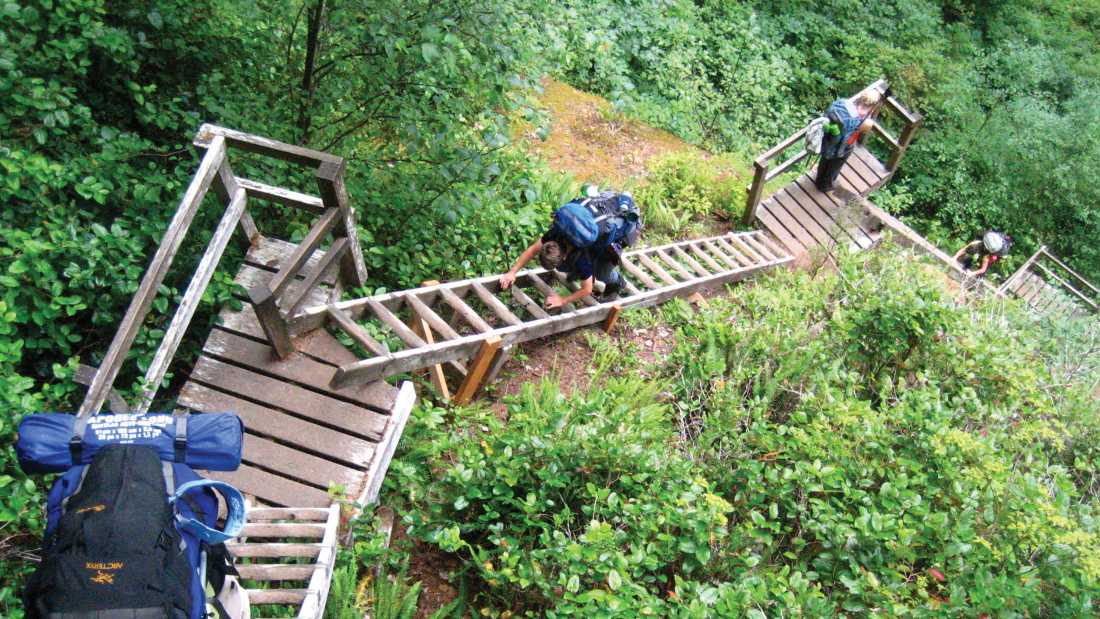
In the Canadian Rockies, summer temperatures are typically around 23°C (73°F) in the townsites of Banff, Jasper or the Kananaskis Valley, cooling down in the alpine, and perfect for the hiking trails. Long days of sunshine allow you to start earlier or end later, maximizing time in one of the most beautiful landscapes on the planet. The region’s glacial lakes and rivers shine in bright turquoise and green, a highlight of exploring the Rockies on our hiking adventure.
Summer in Ontario offers incredible diversity, with the interplay of Canadian Shield, lakes, and boreal forest resulting in some of Canada's most iconic scenery. Temperatures along the Bruce Peninsula sit in the low 20°Cs (70°F), ideal if you plan to traverse the front and backcountry of Bruce Peninsula National Park, but hot enough to enjoy a dip in the refreshing waters of Georgian Bay. On the Niagara Escarpment, summer brings considerably warmer temperatures ranging an average between 25–28°C (77–82°F), cooled by winds off the Great Lakes, especially if you’re cycling along the Waterfront and Friendship Trails.
Summer temperatures average around 25°C (77°F) if you plan on hiking or riding Quebec’s Charlevoix region or the Eastern Townships, cooling down to the high teens or low twenties (65–70°F) if you’re cycling the Ptit Train du Nord in the Laurentians, or taking on the Haven Walk in the Magdalen Islands. Beyond the scenic beauty, these regions are alive with vibrant communities and annual festivals, adding music, food and art into the mix.
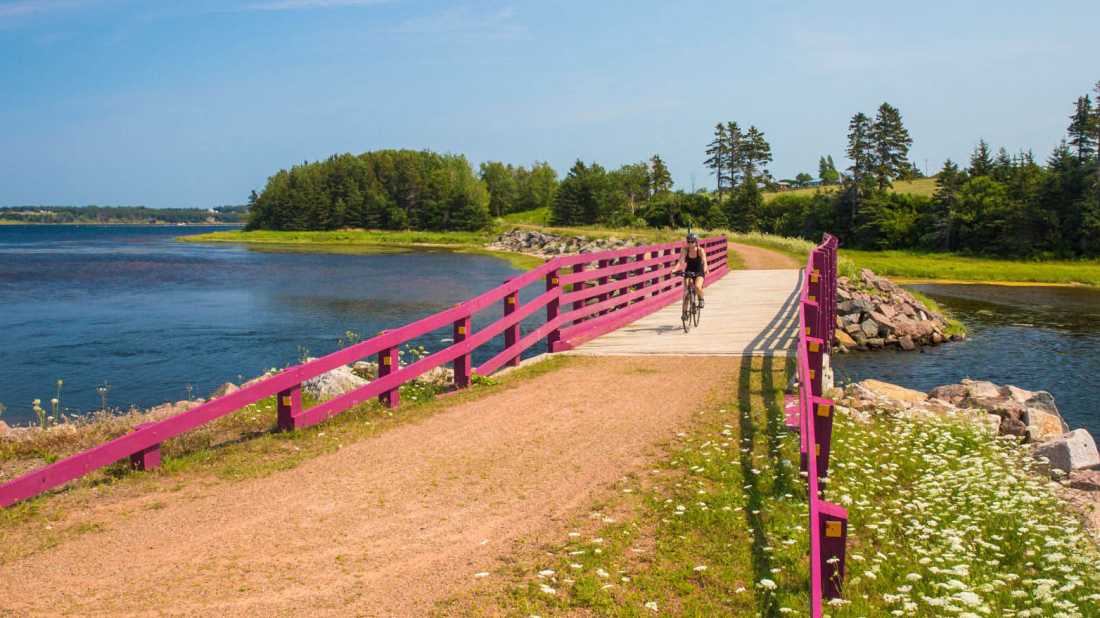
Prince Edward Island offers some of the warmest coastal waters north of the Carolinas, but thanks to ocean currents and winds, it’s mild and pleasant to hit the pedals for beautiful bicycle rides along the coast or the Confederation Trail. July and August temperature highs range around 24°C (75°F), cooler along the coasts and with a pleasant low of around 14–17°C (62°F) at night.
In Newfoundland, they say if you don’t like the weather, just wait a minute. Summers on the East Coast Trail will have it all: hot sunshine, cool coastal winds, foggy rain – sometimes all at the same time, so come prepared. St John’s has an average summer temperature of 20–23°C (68–73.4°F), but it’s cooler along the Avalon Peninsula (around 18–19°C / 65°F). Summer on the west coast around Gros Morne National Park is pleasant with an average daytime temperature between 16–25°C (61–77°F) in July and August.
The Yukon's brief summer is both intense and unforgettable. The midnight sun beams and temperatures remain pleasant with daytime highs in the 20–24°C (68–75°F) range, and hotter in Dawson City. Late July and August are the best times to hike on the spectacular Tombstone Range, the Klondike Gold Rush and the backdrops of Kluane National Park with our 8-day Parks and Wildlife of Yukon itinerary. Evenings can dip below 10°C (46°F) so bring your layers and an eye mask, because it never gets dark!
Fall: Nature's Grand Finale
Autumn in Canada offers crisp air, fewer crowds, and some of the world's most spectacular fall colours.
In British Columbia, average temperatures sit around 18°C (64.4°F), although it’s cooler on the coast or in the mountains. Mild autumn weather is found in the interior, with an average high temperature of around 22°C (71°F) and an average low around 6°C (43°F). As coastal storms begin to intensify, this shoulder season is perfect for those seeking solitude or photographers looking to take advantage of the dramatic weather.
In the Rockies, golden aspens and larches contrast evergreen forests and snow-dusted peaks. Average September temperatures of 15°C (59°F), make for perfect hiking weather, and the absence of summer crowds means you might just have these iconic locations to yourself. Early snowfall can limit high-elevation access, but valley hikes are beautiful and open for business.
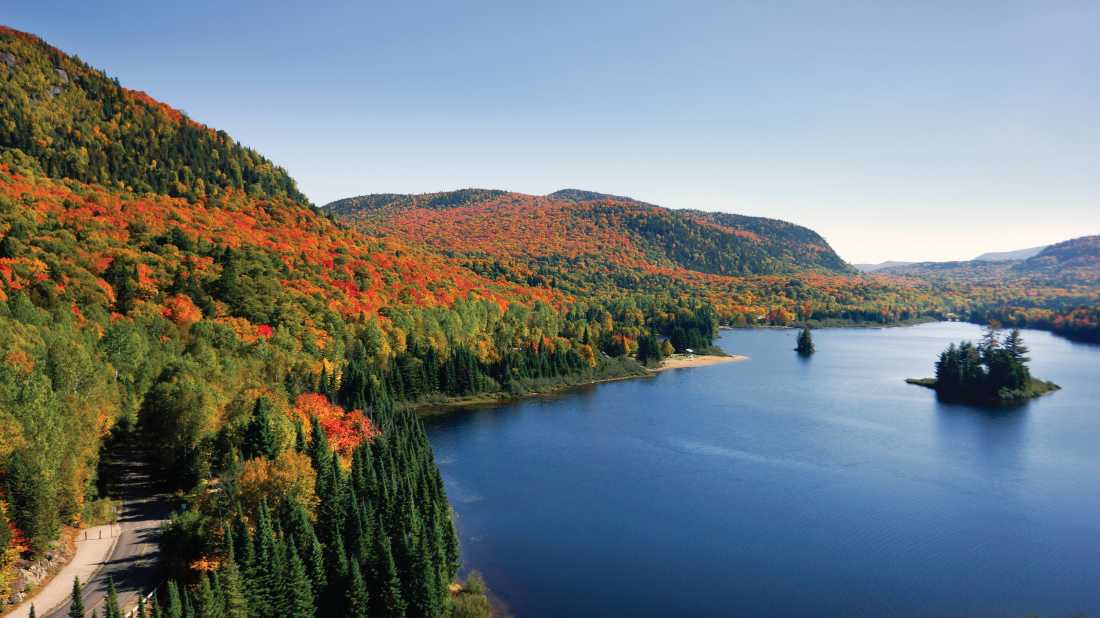
Each autumn, the central Canadian provinces of Ontario and Quebec receive visitors from all over the world, drawn to the explosion of colourful foliage. September in Southern Ontario sees an average daytime high temperature range around 18°C to 22°C (64–72°F), gradually decreasing as the month progresses and days get shorter. Peak foliage varies year to year, but mid to late September and early October tends to be accompanied by a riot of colour, not to mention harvest festivals if you’re visiting regions like Niagara or the Eastern Townships.
Heat and humidity begin to disappear on Prince Edward Island, where the landscape transforms with fall foliage and the harvest of produce (especially those famous potatoes). Mornings are cool in September, warming to an average of 18°C to 22°C (64–72°F) in the afternoon before cooling considerably in the evenings. It all makes for gorgeous riding weather. Local restaurants enjoy the fruits of harvest, including another round of local lobster season mid-August to mid-October.
Our East Coast Trail itineraries run all the way to mid-October, taking advantage of spectacular fall foliage, fewer crowds, and moderate (if occasionally unpredictable) temperatures. We cease our tours before the arrival of snow or ice. Average temperatures on the trail in September have a high of 18°C (64°F) and a low of 9.5°C (49°F), dropping in October to an average daytime high of 10.6°C (51°F) and a low of 4.3°C (39°F). You’ll want to bundle up in the evenings.
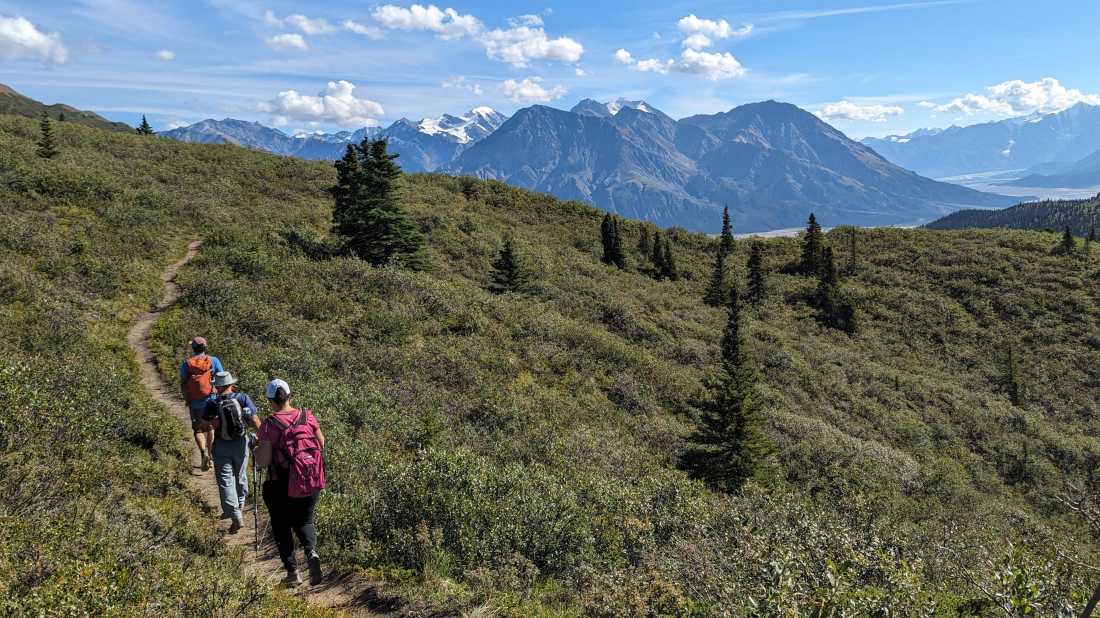
In the Yukon, September temperatures can cool down to 8°C (46°F) towards the end of the month, and we cease our tours by mid-September before it gets too chilly. The reward of an autumn visit is a magic carpet of fall colours, and the world to yourself.
Read more in Robin’s post about Fall in Canada
The one thing you can guarantee on any trip is that there will be weather. Mountains and coastlines are typically unpredictable, and changing climate patterns is making weather harder than ever to predict. Bring the right layers, pack quality gear, and regardless if it’s hot, wet, humid or cool, you’re in for the Canadian adventure of a lifetime.
Robin Esrock is the bestselling author of The Great Canadian Bucket List and The Great Global Bucket List.